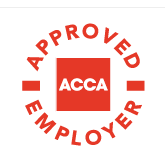Pension Annual Allowance
The annual allowance is a limit on the amount that can be contributed to your pension each year, while still receiving tax relief. The annual allowance is used up through gross pension contributions from you or your employer.
The amount will depend on your earnings; the rule is that you’ll get tax relief on pension contributions of up to 100% of your earnings or a £40,000 annual allowance, whichever is lower.
(Total pension input includes employee plus employer contributions)
The current annual allowance rate is capped at £40,000, consistent with previous years.
| Tax year | Amount |
| 2018-2019 | £40,000 |
| 2017-2018 | £40,000 |
| 2016-2017 | £40,000 |
| 2015-2016 | 6th April to 8th July 2015- £80,000 9th July 2015 to 5h April 2016- £0 |
| 2014 to 2015 | £40,000 |
(The annual allowance will be tapered in
respect to high-income individuals with earnings over £150,000).
The annual allowance can be increased by any unused allowances for the prior three tax years, provided that the individual was a member of a registered pension scheme, even if no contributions were made.
If your pension contributions exceed the annual allowance, you will need to calculate your increased annual allowance using the FIFO method (first in, first out).
For example:
2017/18
You contributed £10,000 * 1.25 = Gross contribution £12,500
Your employer contributed gross = £5,000
Total contribution = £17,500
Annual allowance = -£40,000
Unused allowance of £22,500
2018/19
Your contributed £38,000 * 1.25 = Gross contribution £47,500
Your employer contributed gross = £5,000
Total contribution = £52,000
Annual allowance = -£40,000
Over the allowance by £12,500
- If you do not have any unused annual allowance; e.g. you utilised the whole £40,000 in prior years, or were not registered to a pension scheme, you will need to repay the tax on the amount over the threshold at your highest rate of tax.
- In the example above the £22,500, unused annual allowance from 2017/18 can be offset against the additional £12,500 contribution made in 2018/19.
2019/20
Your contributed £35,000 * 1.25 = Gross contribution £43,750
Your employer contributed gross = £5,000
Total contribution = £48,750
Annual allowance = -£40,000
Over the allowance by £8,750
- In 2017/18 there was £22,500 unused annual allowance, £12,500 has been offset against the additional £12,500 contribution made in 2018/19, leaving a remainder of £10,000. This £10,000 can then be used to offset against the additional £8,750 contribution made in 19/20.
The current year allowance must be utilised before, utilising prior-year unused allowances.
Annual allowance charge
If an annual allowance charge occurs, you, or your scheme provider, will need to repay the tax on the amount over the threshold at your highest rate of tax.
(If your scheme does pay the charge for you, they must reduce your benefits.)
If the charge is over £2,000, you can tell your pension scheme to pay the tax charge, as long as you inform them before the 31st July in the following year. You can inform them electronically or in writing.
If the charge is under £2,000, the pension scheme can choose to pay all, or some, of the tax charge for you. If your pension scheme agreed to pay the tax charge but did not, you are still liable and will need to pay the charge plus any penalties and interest if you have missed the deadline.
There are benefits and drawbacks of the pension scheme paying the charge for you, and this should be discussed further with a financial advisor.
http://www.tagfinancialplanning.co.uk/pjco/our-services
Please get in contact if you have any questions
Contact

You may also like…
Personal savings allowance
60% pensions relief
Allowable business expenses
Undeclared rental income
Buy-to-let properties
Marriage allowance







